Baby’s breath is an airy, whimsical flower that often appears as filler in cut flower bouquets. Its delicate flowers soften arrangements and break up the colors in a bouquet.
It also makes a great garden plant. It provides all the same airy whimsy in a garden bed. It’s easy to grow and can be snipped for your own cut flower arrangements.
**Baby’s breath is considered invasive in some areas. You must check your local government or extension office webpage for a full list of plants that are invasive in your area. Sometimes, garden centers will sell these invasive species, so you must be vigilant about knowing what is invasive in your area.
Baby’s breath is native to Eastern Europe and Western Asia. It was brought over to North America in the 19th century as an ornamental flower.
It is now a mainstay in floral bouquets. Its light, airy texture looks great tucked in between carnations and roses. It’s especially popular in bridal bouquets.
There are different varieties available. They come in white and pink. Any other colors of baby’s breath are generally dyed by florists.
Propagation is simple. It can be done easily through seeds and cuttings. Here are some tips for growing new baby’s breath plants.
Purchasing from your garden center or nursery is the easiest way to obtain a plant that is already in bloom. You can usually purchase them in six-pack cells or a 6-inch basket stuffer size.
You can root and create new plants from cuttings. This can be done using flowers from a bouquet or already existing plants in your garden. It does take a while for them to root and start growing, so you will want to plan ahead.
You will want to choose a healthy-looking stem. Cut four to five inches of the stem just below a leaf node (a small node on a stem where a leaf or branch will grow). Strip all the leaves except for a few of the ones at the top. Dip the cut end into rooting hormone (this step is optional, but it does help your cutting root more successfully).
Have a prepared container with drainage holes cut into the bottoms ready to go. Fill it with evenly moist potting soil. It should feel like a wrung-out sponge. Place the cutting into the soil, deep enough so that the cutting can stand on its own.
I put a plastic cover on my cutting to keep the moisture in. You could also spray your cutting with a spray bottle periodically. Just don’t let it dry out. Place the cutting into an area with bright but indirect sunlight. It should begin to root in 3-4 weeks. Check it often. If it is thriving and growing, and there’s no give when you gently pull the stem upward, it is rooting. Take off the cover and move it into a sunny location for it to grow. You can transplant it into another pot or your garden.
Baby’s breath can also be planted from seed. You can directly sow the seed in the fall. Plant them in a sunny location with well-drained soil. Water them in. You can also do this in the early spring.
To get an early start on flowers, you can start your seeds indoors. Purchase seeds from a reputable seed seller, or you can save the seeds from grown in previous seasons.
You will want to start your seeds 6-8 weeks before the last frost in your area. Plant the seeds in seed trays or small pots filled with a well-draining seed starting mix. Press the seeds gently into the soil, but don’t bury them too deep. I will place a plastic dome over them to help keep the moisture in.
Place the seed trays or pots in a location with bright, indirect light. A sunny windowsill or under grow lights. Keep the soil evenly moist but not waterlogged. Use a misting spray or a gentle watering method to avoid displacing the seeds.
Once the seedlings emerge, remove the dome cover and place them into a sunny window or under the grow lights. Keep them watered while they are growing.
Once the frost has passed in your area, it is fine to plant them outside. While this plant is frost tolerant, that is when it is fully mature. New seedlings will not handle the frost. Make sure to introduce your new plants to the outside slowly. This is a process known as hardening-off. It takes about a week, and it gives your plants that have never been exposed to the elements a chance to acclimate to outside weather.
Dig a hole two or three times as wide and deep as the plant. Remove your baby’s breath from its container and place it in the hole. You will want to line the crown of the plant (where the stem meets the roots) with the soil line. You might need to fill in the hole you dig a bit to get it to the right depth.
I recommend digging the hole deeper than it needs to be and then filling it up. This loosens the soil and will give the new plant a head start to put down roots.
Firmly press your plan into the soil and then water in well. Space your plants about 8-36” apart, depending on the variety and size of the plant (check the tag or seed pack for exact spacing).
Baby’s breath has no problem growing and spreading if it is planted in its ideal conditions. Let’s examine how to grow this delicate flower.
Growth is best in full sun conditions. It needs at least 6 hours of sunlight per day. Less sun will lead to fewer blooms. It will also leave the plant more susceptible to diseases such as crown and root rot and powdery mildew.
Baby’s breath is not too fussy about soil. The only requirement is that it is well-draining. It will not tolerate being in soggy, water-logged soil.
If you have soil with a high clay content, it will not drain as freely as loose sandy soil. You can take some soil in your hand and squeeze it. If it stays in a ball-like putty, it has a high clay content. Add lots of organic matter, coconut coir or peat, or even shredded leaves to loosen it. Do not add sand to clay soil. You will make cement.
This drought-tolerant plant has low water requirements. You will only need to water them when they are first planted, whether it’s seeds or young plants. Water them often throughout their first season. After that, you will only need to water them in periods of prolonged heat and drought.
With its delicate, wispy blooms, babys breath brings an ethereal beauty to any garden. Learning when and how to harvest babys breath will allow you to enjoy these flowers both in arrangements and in your landscape. Follow these tips on optimal harvesting time, cutting techniques, and post-harvest care to get the most out of your babys breath.
When to Harvest Babys Breath
Timing is everything when harvesting babys breath. Pick too early and you’ll miss the full flower show. Wait too long and blooms will fade and fall apart
Peak Bloom
Harvest babys breath blooms when they are in full flower This is typically when about 75% of the tiny flowers on the spray have opened. At peak bloom, the remaining buds will continue opening over the next few days.
Morning is Best
Plan to cut babys breath in the morning after dew has evaporated but before the heat of mid-day. The coolest time of day helps blooms stay hydrated. Morning also allows time for processing and arranging flowers.
Annual vs Perennial
Annual babys breath (Gypsophila elegans) blooms within a couple months of planting. Perennial species take longer to establish but provide recurring bloom.
For annual types, harvest when flowers reach peak bloom. With perennials, cut back spent flowers to encourage reblooming throughout the season.
Proper Cutting Technique
Using the right technique when harvesting babys breath will maximize the number and longevity of blooms:
-
Cut flower stems on a slant using clean, sharp pruners or scissors. This maximizes water uptake.
-
Select stems with at least 2-3 nodes to allow for recutting. Nodes are the points where leaves join the stem.
-
Choose stems with plenty of flowers open and buds yet to open for longest vase life.
-
Take stems of various lengths for visual interest and design flexibility.
-
Cut back to just above a set of leaves to promote regrowth. This maintains a tidy appearance.
-
Make cuts in the morning or late afternoon when stems contain the most water.
Post-Harvest Care
Proper post-harvest care is key to helping cut babys breath blooms look their best for as long as possible:
-
Immediately place stems in clean, lukewarm water up to the flower heads.
-
Recut stem ends by 1-2 inches every 2-3 days. Use a sharp blade for maximum water uptake.
-
Change the water daily using filtered or distilled water. Avoid chlorinated tap water.
-
Display flowers out of direct sunlight to prevent fading.
-
If blooms start to droop, recut stems and refresh the water. Remove any decaying foliage.
-
Consider using floral preservatives to prolong vase life. Follow directions carefully.
Enjoying Babys Breath All Season
With proper timing and technique, you can fill your home with beautiful babys breath blooms while keeping plants looking their best:
-
Harvest blooms for indoor arrangements, leaving some on the plants.
-
Deadhead spent blooms to encourage reblooming.
-
Shear plants halfway mid-season to promote bushy new growth.
-
Water and feed plants to support flowering.
-
In fall collect dried blooms for everlasting arrangements before frost.
By learning when blooms are at their peak and how to cut them expertly, you can harvest armloads of delicate babys breath to grace your home with ephemeral beauty. Follow best practices for post-harvest care to extend the magic as long as possible.

Climate and Temperature Requirements

Baby’s breath is hardy in zones 3-9, making it an accessible plant for many gardeners.
It’s easy to grow. Just make sure it is in a dry spot. It does not like being wet. In warmer climates, you might need to provide some afternoon shade.
Remember, baby’s breath is invasive in many areas of North America, especially in the northwest and midwest regions. These climates are ideal for the plant, but cause lots of problems for local ecosystems. Always check with your extension office before planting.

Baby’s breath doesn’t need extra fertilizer. Adding organic matter like compost, aged manure, worm castings, or sea soil in the spring or fall is enough.
Over-fertilizing your plant will make it grow large and flop over. It can also spur growth that is hard for gardeners to maintain. They are much more neat and compact without the addition of extra nutrients.
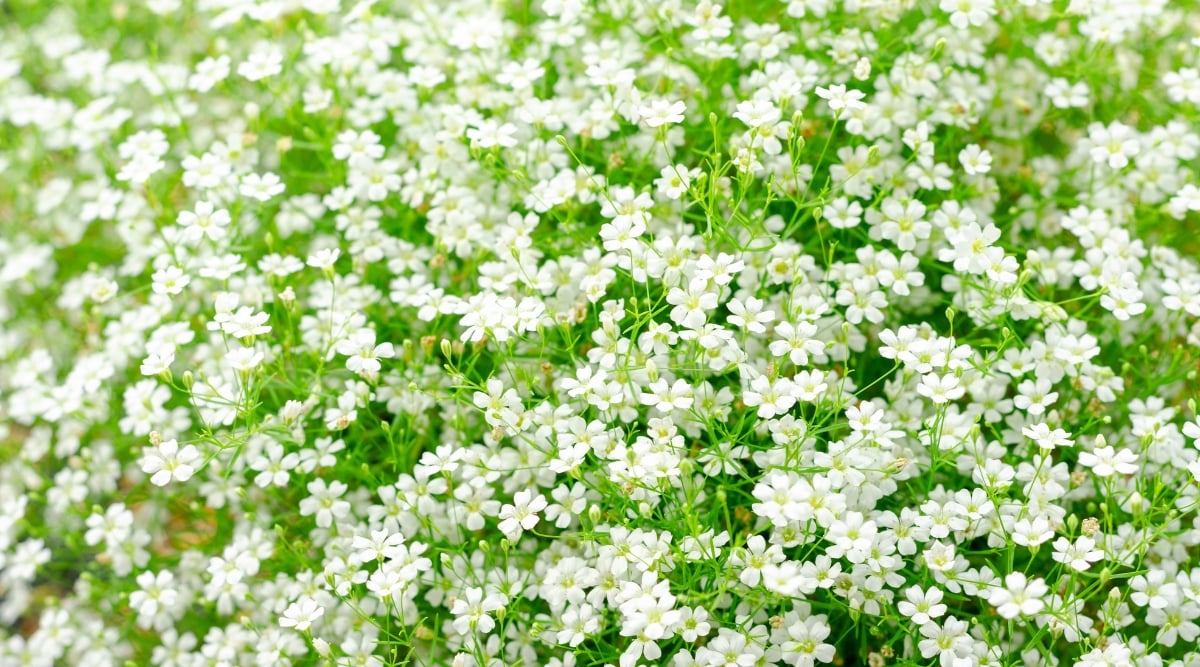
This is a fairly low-maintenance perennial. I like to prune mine back after the first flush of flowers has finished blooming. This allows for another flush of flowers to grow. I also cut it back in the fall and allow it to regrow in the spring.
There are many varieties of baby’s breath. They come in various sizes and colors.
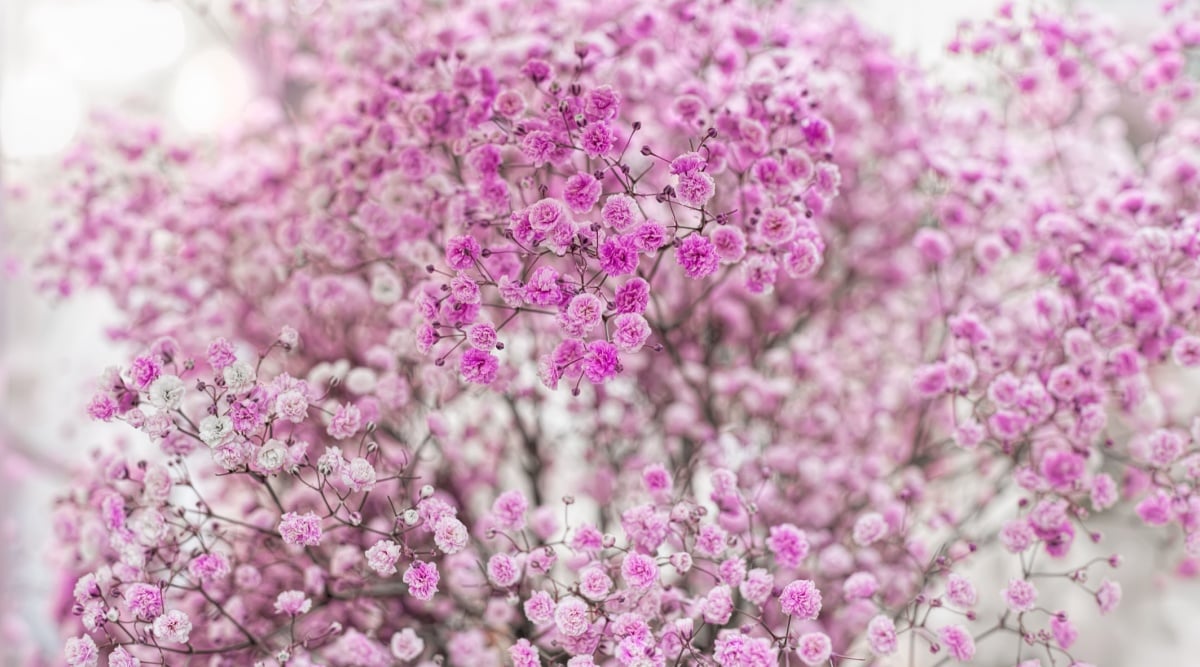
‘My Pink’ is a pretty variety with blushing pink flowers. They bloom all summer long and make great cut flowers for bouquets.

‘Million Star’ is an explosion of tiny white flowers. It is compact and grows on sturdy stems. This is the variety you want for cut flowers. It has an airy quality that will add whimsy to all of your bouquets.
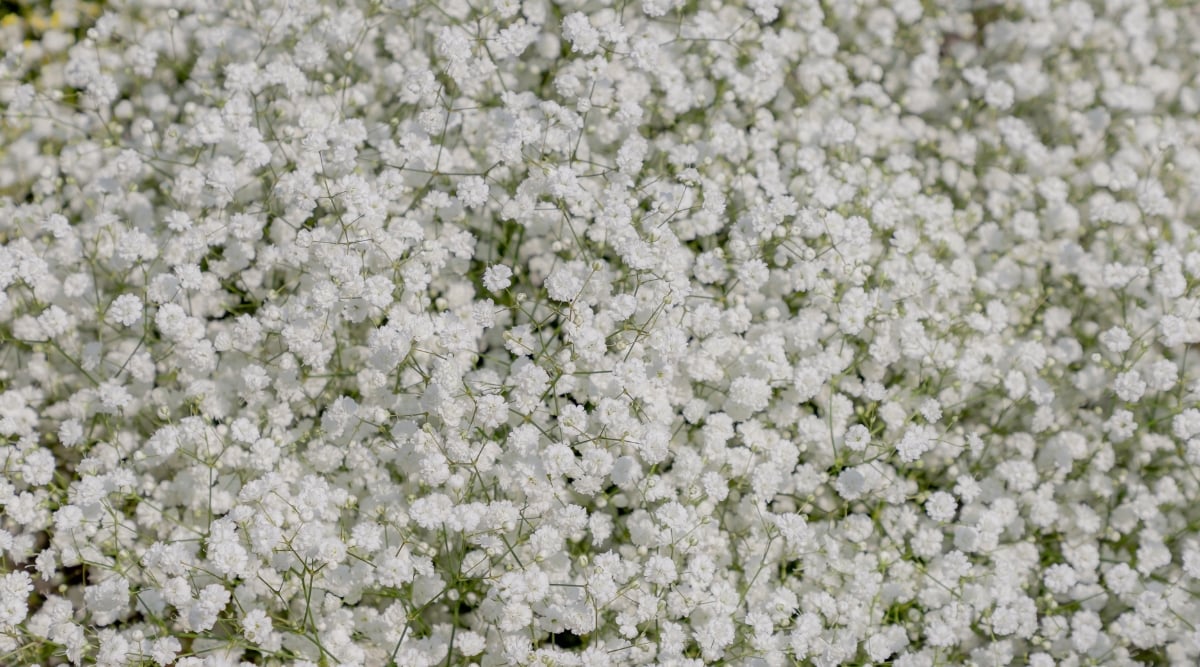
‘Snowflake’ is another classic white variety that is perfect for bouquets. It produces many tiny white flowers in sturdy stalks.
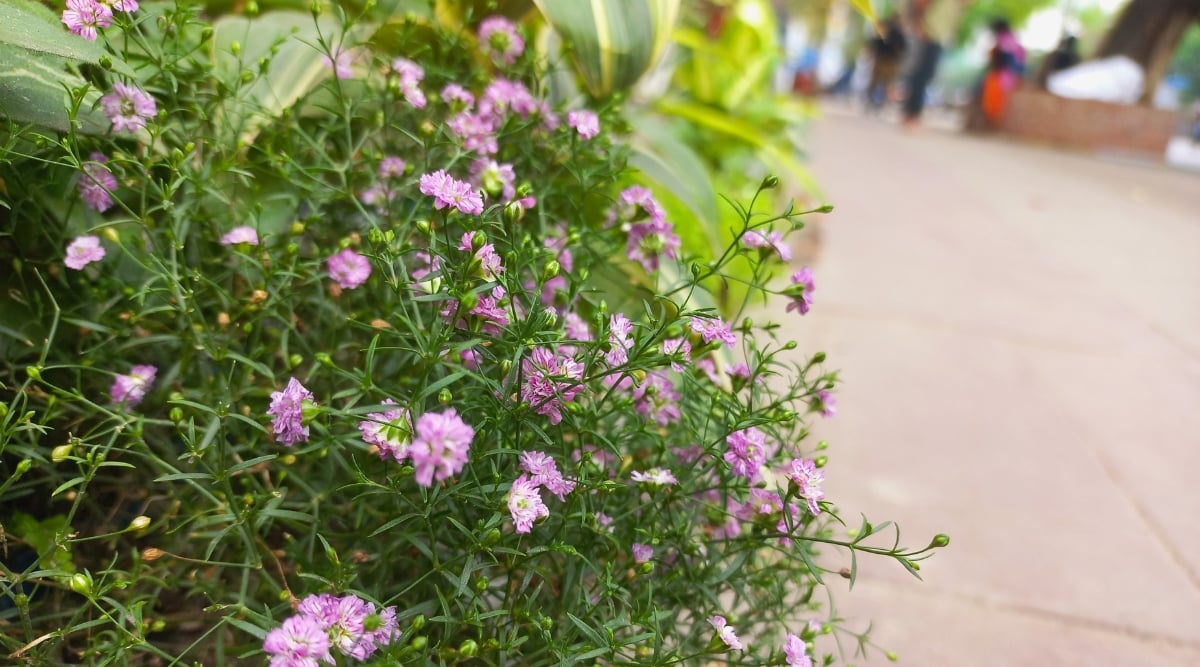
‘Flamingo’ is a bold pink variety. The flowers come in various shades of pink. Some are more pale pink, while others are bright fuschia pink. They make excellent cut flowers that add bold color to your bouquets.

This flower is grown for two reasons. First, as a perennial that adds texture and flowers to your garden. Second, it is grown to be used as a cut flower.
This perennial looks great in garden borders, rock gardens, and meadow gardens. It softens the landscape with its sprays of tiny flowers. Plant it with roses, bachelor buttons, peonies, or coneflowers for a beautiful floral display.
It also looks great in containers. One of my favorite arrangements is just a pot filled with baby’s breath. It has a romantic cottage vibe.
You can plant your baby’s breath and use it for cut flowers straight from your garden. Or, you can mass plant them in rows or an out-of-the-way location if you use a lot of them. Since they are low maintenance, you can have them growing in a sunny but hardly seen area of your garden. Then, when you’re ready, you can clip them and put them in vases by themselves or with other flowers.
Healthy baby’s breath will rarely have problems. If you are experiencing pests and diseases, examine their growing conditions and see if they are ideal. If they’re not, you will want to fix their conditions so they can thrive. Insect pests are often attracted to plants with higher sugar content, and this comes from excesses or lack of nutrients. Here are some pests and diseases your plant can encounter.
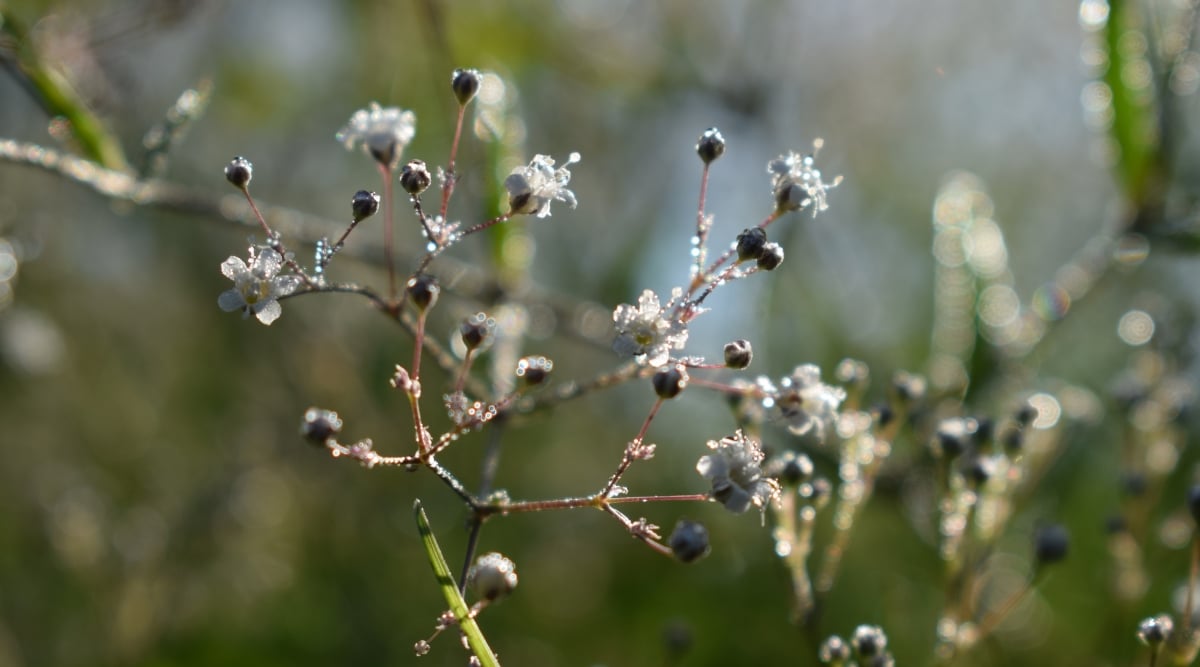
Baby’s breath can get powdery mildew. This is a white powder film that you will find covering your plants. It will stunt their growth and ruin their blooms.
Powdery mildew appears when conditions are too damp. This flower does not like overly damp conditions and is susceptible to powdery mildew if constantly wet. Provide full sun (6+ hours) conditions.
Overhead watering and wet foliage can cause powdery mildew. Bottom watering is always best. I use a soaker hose snaked through my garden that delivers water straight to the soil line without getting the foliage wet. If you are watering overhead, water early in the morning. This way, the sun can quickly dry the foliage of the plant.
If you are dealing with powdery mildew, you can’t spray with a fungicide as it’s not an effective treatment. Remove affected parts of the plant during the season. Cut down and dispose of the plant after the growing season to avoid recontamination. Sometimes, if the mildew is really bad, I’ll just cut it down and dispose of it.
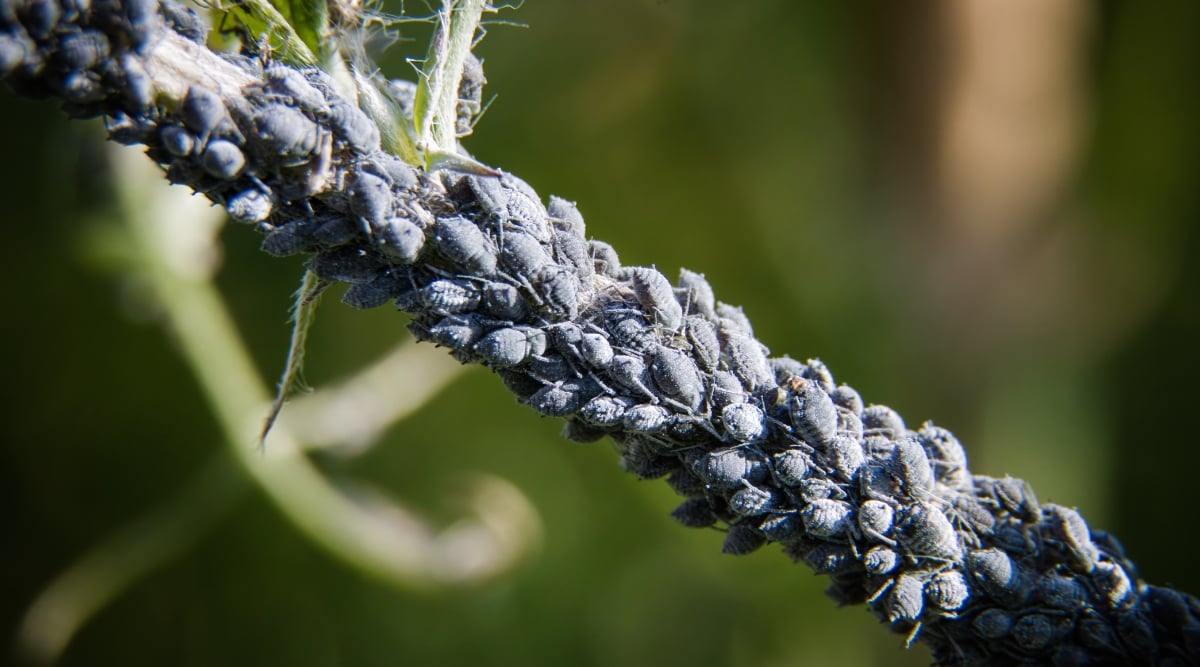
Aphids are pests that frequently attack weakened plants. They are small, soft-bodied insects that will suck the sap and life out of your plants. You will find them tucked in and around the leaves and stems. They are sticky because they produce a substance known as honeydew.
The best method of dealing with aphids is prevention. Ensure your plants are healthy. They need full sun and moderate watering. They should never be left in standing, waterlogged soil.
Encourage ladybugs with plants. These feed on aphids, and they will devour them. Or spray them with the hose and scale them off. Lastly, you can spray them with an insecticidal soap. Make sure to dispose of the plants after the season has ended to prevent further breeding and nesting.
Crown and Root Rot
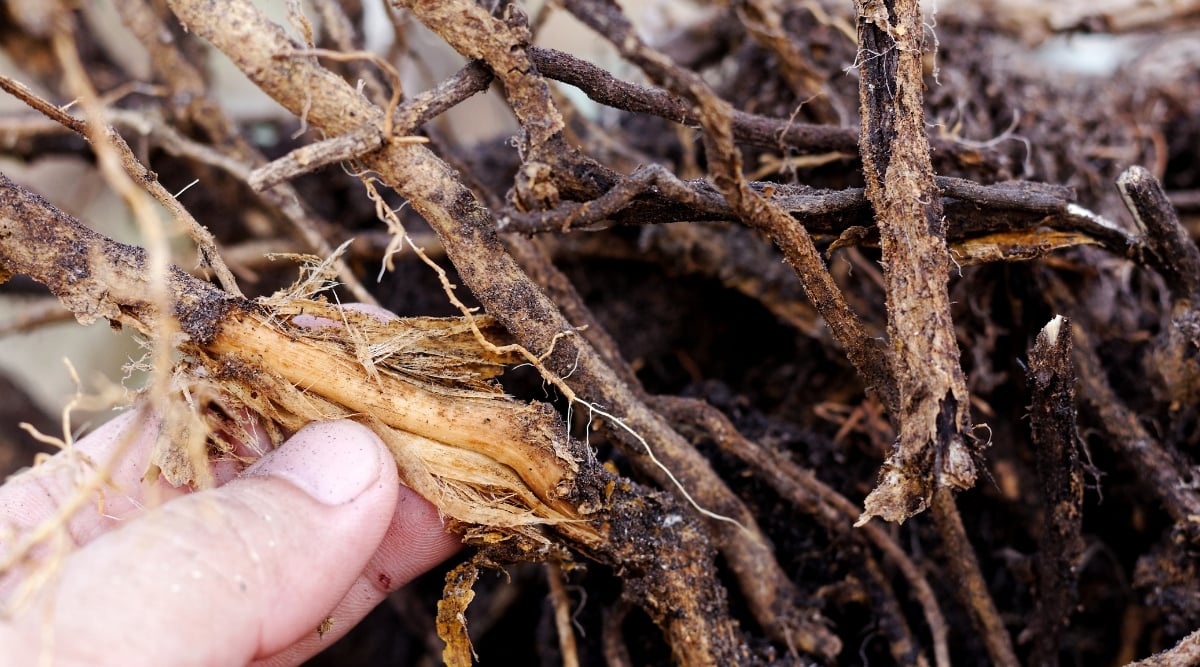
Crown and root rot can be a problem. This is when the plant turns yellow and dies, or the plant will turn to mush at the crown.
This plant hates sitting in wet soil. This is why well-draining, loose, and sandy soil is important. If you are growing in a container, make sure you have adequate drainage holes so excess water can run out.
Unfortunately, there is no cure for crown and root rot. The plant will die, and you will need to replant it. Make sure you are planting your in its ideal conditions (full sun, well-drained soil).
How to Process Babies Breath Prep
FAQ
When should I cut my baby’s breath?
How often should babies breath be watered?
Can I grow baby’s breath from a cutting?
Does baby’s breath come back every year?
